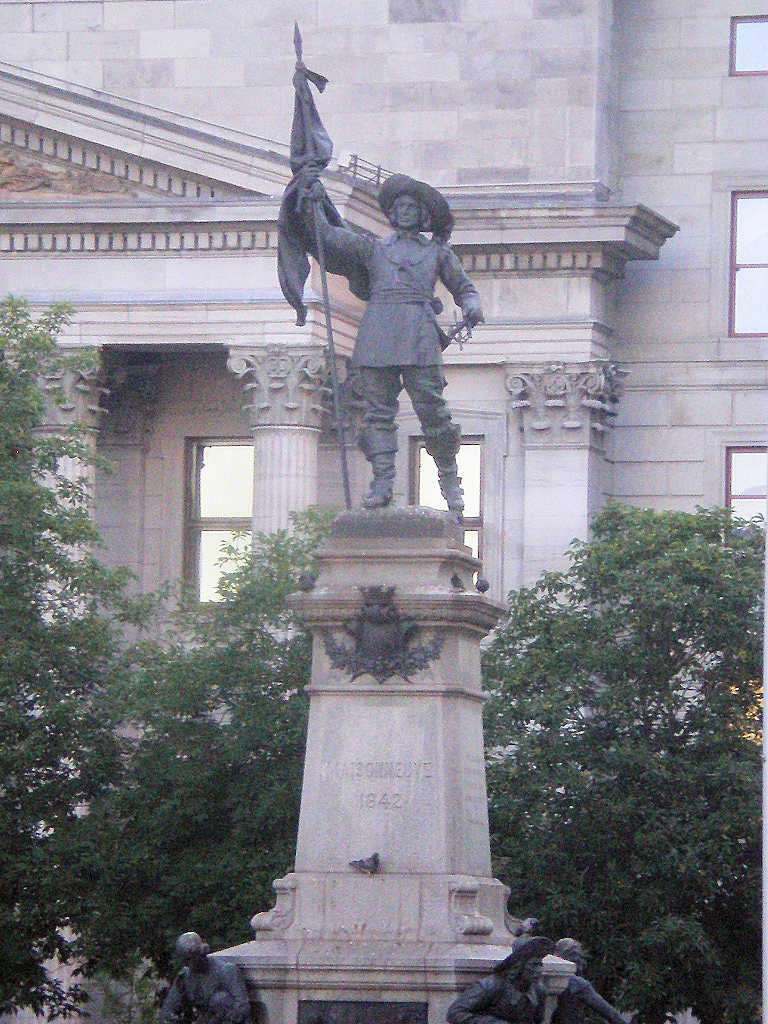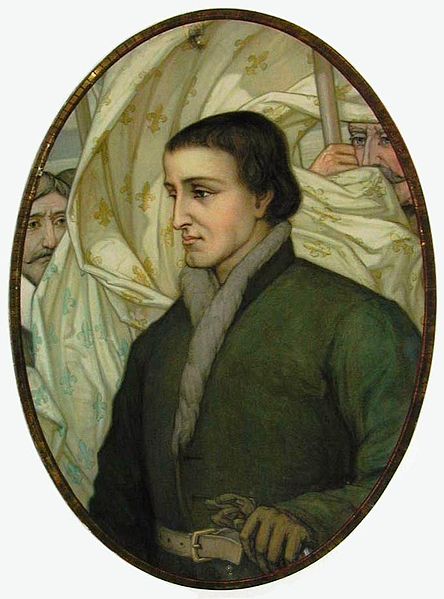In many of its aspects, this enterprise of Montreal belonged to the time of the first Crusades. The spirit of Godfrey de Bouillon lived again in [Paul de] Chomedey [Sieur] de Maisonneuve; and in Marguerite Bourgeoys was realized that fair ideal of Christian womanhood, a flower of Earth expanding in the rays of Heaven, which soothed with gentle influence the wildness of a barbarous age.
On the seventeenth of May, 1642, Maisonneuve’s little flotilla—a pinnace, a flat-bottomed craft moved by sails, and two rowboats—approached Montreal; and all on board raised in unison a hymn of praise. Montmagny was with them, to deliver the island, in behalf of the Company of the Hundred Associates, to Maisonneuve, representative of the Associates of Montreal. And here, too, was Father Vimont, Superior of the missions; for the Jesuits had been prudently invited to accept the spiritual charge of the young colony. On the following day, they glided along the green and solitary shores now thronged with the life of a busy city, and landed on the spot which Champlain, thirty-one years before, had chosen as the fit site of a settlement. It was a tongue or triangle of land, formed by the junction of a rivulet with the St. Lawrence, and known afterwards as Point Callière. The rivulet was bordered by a meadow, and beyond rose the forest with its vanguard of scattered trees. Early spring flowers were blooming in the young grass, and birds of varied plumage flitted among the boughs.
Maisonneuve sprang ashore, and fell on his knees. His followers imitated his example, and all joined their voices in enthusastic songs of thanksgiving. Tents, baggage, arms and stores were landed. An altar was raised on a pleasant spot near at hand; and Mademoiselle Mance, with Madame de la Peltrie, aided by her servant, Charlotte Barré, decorated it with a taste which was the admiration of the beholders. Now all the company gathered before the shrine. Here stood [Fr.] Vimont, in the rich vestments. Here were the two ladies, with their servant; Montmagny, no very willing spectator; and Maisonneuve, a warlike figure, erect and tall, his men clustering around him—soldiers, sailors, artisans, and laborers—all alike soldiers at need. They kneeled in reverent silence as the Host was raised aloft; and when the rite was over, the priest turned and addressed them:
“You are a grain of mustard seed that shall rise and grow till its branches overshadow the earth. You are few, but your work is the work of God. His smile is on you, and your children shall fill the land.”

Maisonneuve Monument at Place d’Armes, Montreal. Erected in 1895, as part of the celebrations for the 250th anniversary of the founding of the city in 1892. The main statue on top is of Paul Chomedey de Maisonneuve.
The afternoon waned; the sun sank behind the western forest, and twilight came on. Fireflies were twinkling over the darkened meadow. They caught them, tied them with threads into shining festoons, and hung them before the altar, where the Host remained exposed. They then pitched their tents, lighted their bivouac fires, stationed their guards, and lay down to rest. Such was the birth-night of Montreal.
Is this true history, or a romance of Christian chivalry? It is both.
Francis Parkman, The Jesuits in North America in the Seventeenth Century (Boston: Little, Brown, and Company, 1897, 2:23–25.
Short Stories on Honor, Chivalry, and the World of Nobility—no. 852








